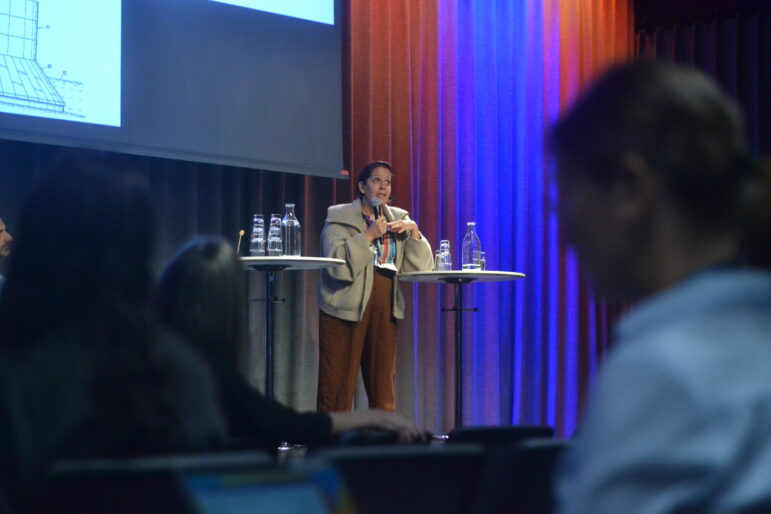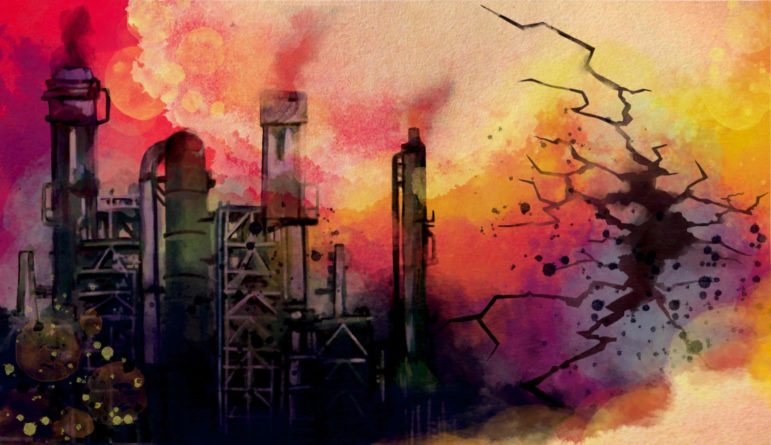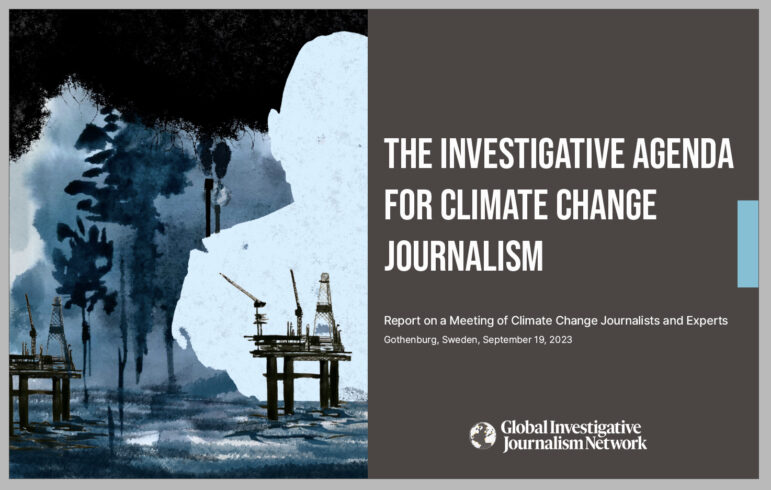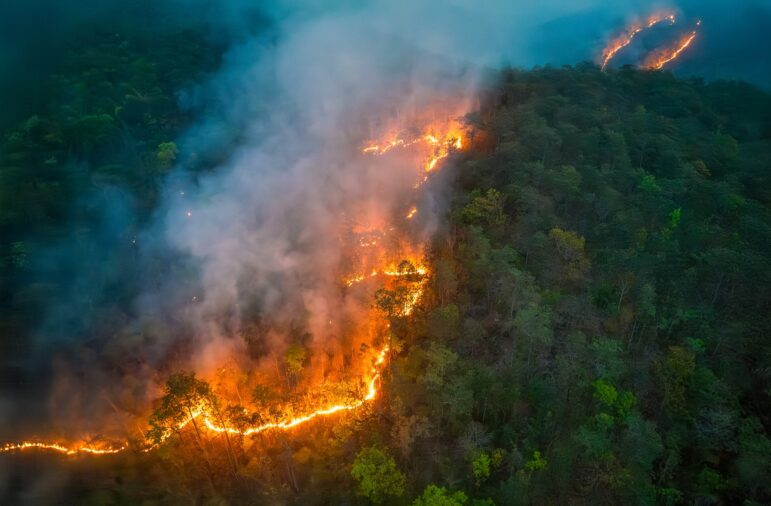

Image: Shutterstock
Climate Change Reporting and Mental Health: Practical Tips for Newsrooms and Journalists
Read this article in
It’s not surprising that climate change takes a mental health toll on the journalists who cover the beat — whether from the newsroom, in the field covering natural disasters or extreme weather, or direct experience with trauma caused by climate change.
After all, climate change is our greatest global public health threat, according to a major study by The Lancet medical journal. Reuters Institute director Mitali Mukherjee cited that study while moderating a recent webinar hosted by the Oxford Climate Journalism Network. Mukherjee also noted: “Equally true is that journalism isn’t getting any easier to practice.”
At the webinar, Anthony Feinstein, professor of psychiatry at the University of Toronto revealed his latest research on the topic. Feinstein, who has also published studies on the emotional toll on journalists who report on war and those who report on the refugee crisis, surveyed 268 journalists from 90 countries in a first-of-its-kind study into the impact of climate change reporting on journalists’ mental well-being.
Using health questionnaires, self-reporting mental health scales, and existing diagnostic criteria for PTSD and depression, his survey uncovered some striking findings. A strong majority of climate journalists contacted said the impact on their mental health is not taken seriously in newsrooms.
“When I started 25 years back, focusing on war and revolution, it was similar to the situation that you now face with climate change,” Feinstein explained. “People were not taking [the mental health impact] seriously. But good data started to shift the needle.”
This was followed by a discussion on the implications for journalists and what newsrooms should do to support them. The panel included Sharon Chen, managing editor of Bloomberg Green; Jhesset O. Enano, an independent climate reporter; and Diego Arguedas Ortiz, associate director of the Oxford Climate Journalism Network.
Moral Injury
Other key findings of the study: climate change reporters have higher-than-average levels of anxiety, depression, and post-traumatic stress (PTSD) symptoms. Almost half report severe to moderate symptoms of anxiety (48%) and depression (42%), and around one in five journalists (22%) reported prominent symptoms of PTSD — such as numbing, unwanted recollection of trauma, avoidance, and hypervigilance — often from covering climate change on the ground but also from exposure to traumatic events in a newsroom setting.
“When you look at the lifetime prevalence for PTSD in a safe country like Canada, it’s around 6%,” Feinstein noted. He also found that 30% of the journalists surveyed in the sample had been directly impacted by climate change — such as by losing a family member, friend, or a home, or being evacuated from disaster zones. Also high on the list of sources of stress and anxiety: poor salaries, lack of resources, and harassment and threats. And 55% of respondents said they do not have access to resources for supporting mental and physical health.
In addition, the survey found that climate journalists are likely to have symptoms of moral injury — a trauma syndrome which Feinstein described as “injury done to a person’s conscience or moral compass… when that person perpetrates, witnesses, or fails to prevent acts that transgress their own moral or ethical values.” Although it’s not classified as a mental illness, Feinstein said that “when people have moral injury — and this is journalism data — it has real-world consequences” such as alienation from work, withdrawal and avoidance, sabotaging relationships, and self-medication with alcohol. “Some people’s distress doesn’t move on,” he added.
But Feinstein also pointed out the study’s positive findings: 83% of journalists surveyed feel there is a positive psychological aspect to their work, and fewer depressive symptoms were experienced by journalists who felt their work was influencing the discussion on climate change. And he cautioned that the study was not geared to establish causal relationships or to formally diagnose mental illness, but to learn from the data, consider practical solutions, and raise awareness of the issue.
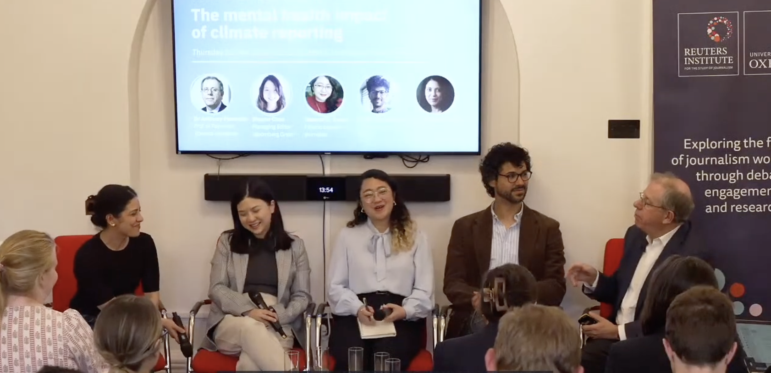
From left to right: Mitali Mukherjee, Reuters Institute director, Sharon Chen, Bloomberg Green managing editor, Jhesset O. Enano, an independent climate reporter, Diego Arguedas Ortiz, associate director of the Oxford Climate Journalism Network, and Anthony Feinstein, professor of psychiatry at the University of Toronto. Image: Screenshot, YouTube, Reuters Institute
What Can Newsrooms and Journalists Do?
The discussion explored measures that can be taken immediately by news organizations and journalists.
Some anxiety can be mitigated by considering new ways to frame the issue to make more impact. “We face a lot of these climate disasters and hazards almost on a daily basis,” said Manila-based independent journalist Jhesset O. Enano. “A big challenge is: How do we keep telling these stories in a way that people will still listen, and care?”
Bloomberg Green’s Sharon Chen noted that her journalists “feel more positive when they feel like their journalism is helping someone. The reporter who was feeling anxious and then shared that anxiety, and turned it into a dialogue with readers, can feel better herself because she’s done something about it.”
Speakers agreed that while mental health support and resources might be available for journalists reporting on war and conflict, conversations around climate change and mental health were not as common. Still, even small news organizations can make improvements.
“I think the overwhelming feeling is that there is a lack of space and support to talk about this in newsrooms,” said Arguedas Ortiz, associate director of the Oxford Climate Journalism Network. “For me, the key message here is that media organizations are failing at something when they send us to cover climate change for years and decades without providing the support for it… If you break a leg doing your work, I’m guessing your company will support you in different ways, but it’s not happening when you deal with climate change and mental health.”
It doesn’t have to be this way, he added. Organizations can take steps, big or small, to change this. Arguedas Ortiz pointed out that when Feinstein talked to newsrooms about how to change mental health protocols when covering war and conflict, newsrooms changed. To illustrate his point, Arguedas Ortiz cited HumAngle Media in Nigeria, which has a small team of reporters, but also in-house clinical psychologists who support reporters covering conflict.
“Organizations that cover climate change… can change protocols, and it can be something done on a big scale in big organizations like the BBC or Bloomberg, where you have a big budget for resources, or it can be done in a small organization,” he said.
Taking Steps Toward Systemic — and Personal — Change
Feinstein noted that there are simple and inexpensive ways to provide mental health support. “My experience is that a little therapy can go a long way,” he said. “Sometimes you just need a few sessions to help a journalist… I think it helps organizations financially if you’ve got journalists who are then less likely to [take time] off work for mental health reasons.”
“No matter what governments say, and no matter what politicians say, and no matter how much they deny this problem [of climate change], if you devote time to yourself and you nurture your relationships, you’re doing something to protect yourself. It’s that kind of message that you’ve got to get out there as well, and that doesn’t take a whole lot of money,” he added.
Also helpful, Feinstein explained, is having high-profile journalists share their own experiences in a public forum, so that newsrooms and management become aware and take the issue more seriously.
Journalists can also take steps on their own to protect their mental health. “You can’t wait for the structure to change. You have to start yourself right now, with what you control,” said Arguedas Ortiz, who noted that journalists have told him about the importance of a community space like the Oxford Climate Journalism Network, or have started their own.
“A thing I’ve heard often is the value of the OJCN as a community of peers that share and discuss ideas, and how that can be translated in newsrooms in countries in your group of colleagues,’” he added. “Communities are a space of healing… people come to us and say: ‘I came for the science and the policy, but I stayed for the space, and the belonging, and the peers.’”
Feinstein agreed that the benefits of community are well-known in the mental health field. “If you’ve got good relationships and a supportive network, these are powerful protective factors,” he explained. “That resonates with the broader mental health literature. If you step outside journalism, even with major mental illnesses like schizophrenia, if you’ve got good psychosocial support around you, then you can have a better outcome.”
Watch the full panel video below.
 Alexa van Sickle , a GIJN associate editor, is a journalist with experience across digital and print journalism, publishing, and international think tanks and nonprofits. Before joining GIJN, she was senior editor and podcast producer for the award-winning foreign correspondence and travel magazine, Roads & Kingdoms, and a contributor for its sister site, Explore Parts Unknown — the companion website for Anthony Bourdain’s “Parts Unknown” TV show.
Alexa van Sickle , a GIJN associate editor, is a journalist with experience across digital and print journalism, publishing, and international think tanks and nonprofits. Before joining GIJN, she was senior editor and podcast producer for the award-winning foreign correspondence and travel magazine, Roads & Kingdoms, and a contributor for its sister site, Explore Parts Unknown — the companion website for Anthony Bourdain’s “Parts Unknown” TV show.

